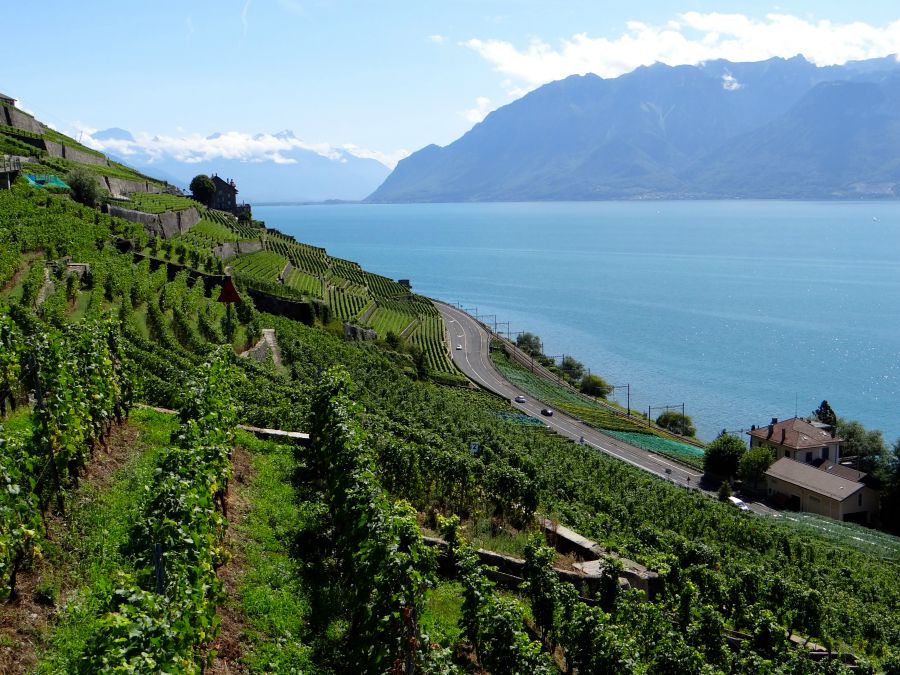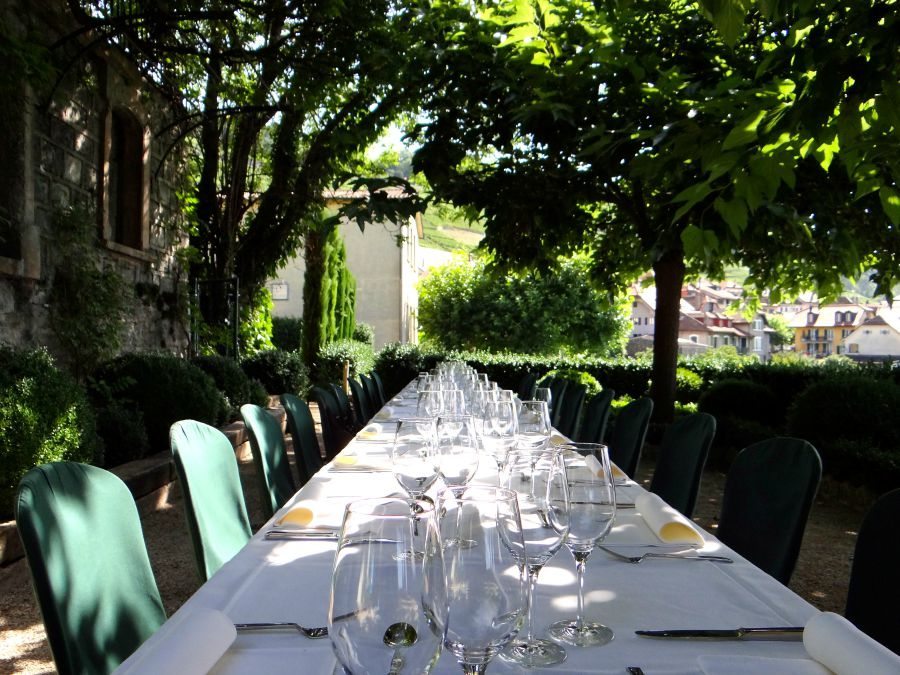You don’t have to be a wine fanatic to appreciate Lavaux, but it certainly helps. Rooted in tradition, many wines from this region are still made like the Benedictines and Cistercian monks did in the 11th century. If you’re a white wine drinker, you’re in for an extra special treat.

What to expect
Before landing in Switzerland, I fully anticipated feasting on chocolates but wine tasting never really crossed my mind. As it turns out, there’s a pretty simple reason. Less than 1% of Swiss wines are actually exported outside the country.
So, it’s safe to say that my appreciation for Swiss wines went from 0 to 100 pretty quick and all it took was a full hours frolicking in Lavaux’s terraced vineyards. Lavaux is an UNESCO World Heritage Property in the “cultural landscape” category and every bit as beautiful as I’d imagined. In total, there are more than 10,000 terraces and over 400 walls. From the to of the terrace, you’ll have a bird’s eye view of Lake Geneva.
Getting started
Touring Lavaux largely depends on how much time you have and how much you want to drink (I’m serious)! I did a combination of driving and walking but if I were to do it all over again, I’d probably bike part of the way. Regardless of how you reach Lavaux, I’d recommend starting in Lausanne because there are many regional trains that shuttle travelers to and from the city center.
Once there, aim to start your walking tour in the medieval town of St. Saphorin. A far cry from the bustling city streets of Lausanne, St. Saphorin boasts a more simple way of life. In between narrow alleys and drinking fountains, you’ll see winegrowers’ houses that date back to the 16th century.

Wine, wine, everywhere!
Located on the northern shores of Lake Geneva, there couldn’t be a prettier place to grow wine. The area is best known for its white wine production, most notably those from the Chasselas grape. For red wines, you’re likely to see Pinot Noir and Gamay.
There are also select bottles of Pinot Gris, Pinot Blanc and Sauvignon Blanc. In terms of soil and weather conditions, Lavaux is most similar to that of German wine regions like the Mosel. In terms of wine production, the 800 hectares of steep, terraced vineyards get warmth in three distinct ways: from direct sunlight, from mirrored reflections from Lake Geneva and from heat stored in the stone walls.

Sit and sip
As peaceful as a stroll through terraced vineyards is, don’t forget to stay hydrated! In terms of dining in Lavaux, there are a few options. The simplest answer is to pick a restaurant in one of the towns. For example, La Gare Cully Café Restaurant in Cully serves typical products of the Vaud region plus a selection of French-inspired dishes.
Alternatively, save some cash by packing a picnic and finding a nice grassy patch to eat. Either stock up on food from Coop and Migros supermarkets beforehand or stop by a local grocery store in Lutry and Cully. Many of the villages have open-air markets where you can purchase everything from meat and cheese to fruits and veggies.

Stop and smell the wine
We all suffer from FOMA every once in awhile and I’m no exception. That said, try not to overpack your schedule. Instead of visiting every single museum and vineyard, pick a handful to visit and then see where the rest of the day takes you. One of my favorite memories from Lavaux was a wine tasting and lunch hosted at a local vintner’s house.
While this was organized for our media group, there are many wineries that are open to the public and don’t require special arrangements. Make sure to stop by the Lavaux Vinorama for a panoramic view of the region plus some fun facts about wine making. The space is open year-round, except for January.
 This trip was hosted by Switzerland Tourism. All opinions are my own.
This trip was hosted by Switzerland Tourism. All opinions are my own.

Megan Eileen McDonough is writer, blogger and social media specialist based in New York City. She also runs Bohemian Trails, a lifestyle blog designed for the savvy and stylish traveler. Bohemian Trails aims to feature must-see places around the world, covering everything from revamped neighborhoods and vibrant street art to innovative tech hubs and everything in between. Her cultural escapades have taken her to Latin America, Asia, Europe, and the Middle East.
Megan is also a freelance writer and social media specialist based in New York City. She contributes to various online and print publications in the travel and fashion industries and is an international correspondent for both Jetsetter and Northstar Travel Media.








